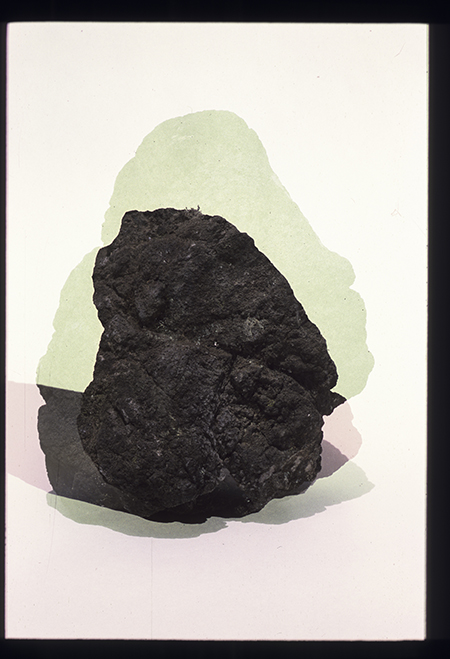Julia Rometti & Victor Costales

Julia Rometti and Victor Costales treat nature as a space for political inscription. The fruit of years of field research in Latin America, ‘El Perspectivista Parts I and II’ addressed the tropics as a field for geo-political critique and radical imagination. Developed over two consecutive exhibitions at Jousse Entreprise, the shows comprised handcrafted sculptures and installations – from magical Amazonian seeds and volcanic rocks to photographs of shaman-like succulents, collages of fractalized desert landscapes and animistic videos of radicalized prayer plants.
Key to ‘El Perspectivista’ was the way the artists reconfigured particular ideas from one chapter to the next. The Flag of Magical Anarchism (2013), for example, which played an emblematic role in the first show, was revisited in shamanic form in chapter two as The Curtain of Magical Anarchism (2013). Both flag and curtain were handmade by the artists from black and red Amazonian huayruro seeds, whose psychotropic qualities conferred the works with a magical-political status. Nailed to the wall, the flag was made from seeds beaded into a triangle echoing the anarchist emblem. The full-length curtain, meanwhile, was threaded on rope so that its front was carmine red, leaving the back black.
Both flag and curtain were conceived as props for a speculative narrative: an intellectual exchange between an anarchist expatriated in the Bolivian jungle and a native Amazonian community. This fictional scenario was developed in abstract form in other works in the show. In Roca | Azul | Jacinto | Marino | Errante (2013), the artists create a portrait of Azul Jacinto Marino, an imagined shaman, poet and anarchist. This comprises two volcanic rocks placed on concrete tiles, composing a Necker Cube pattern – a 3D optical illusion of a shape permanently oscillating between perspectives – traced in a deep blue. The rocks, therefore, exist within a framework of simultaneously oscillating perspectives. Their sense of indeterminacy permeates Azul’s persona, whose spectral presence unfolded silently throughout ‘El Perspectivista’.
Rometti & Costales’s speculative endeavour shares an affinity with contemporary anthropologist Eduardo Viveiros de Castro’s studies of Amazonian Indians, which led him to a critique of multiculturalism and its replacement with the concept of multiperspectivism. As he described it, ‘it is not a plurality of visions of the same and only world but a single vision of different worlds’. Viveiros de Castro also connects this perspectival shift with the estrangement of the individual from the state, positing the ‘state as the self’ – a standard definition of anarchy – and anarchy as a form of animism. ‘El Perspectivista’ was also influenced by epistemological geometries. Cosmovisión V – VI – VII (2013) is a collage composed of three black and white aerial photographs of the Amazonian rainforest, sourced from the Military Geographic Institute archive in Ecuador, and cut by the artists into a pattern of Necker Cubes. As a result, our eye constantly shifts perspective in its attempt to recompose the original image of the forest. As the artists observe in the press release: ‘This oscillation is similar to the shaman’s ability to move between human and non-human points of view.’
If globalization has tended to configure an international code (aesthetic and otherwise), Rometti & Costales are part of an emerging generation of artists forging a path out of this code. Their work should be considered against the backdrop of postcolonial practice and ‘peripheral’ art, whose anthropophagist strategy of appropriation and syncretism – intended as a form of cultural resistance – has in retrospect continued to reproduce the same hegemonic culture it sought to contest. The achievement of ‘El Perspectivista’ lay not only in its multifacetedness, but in the positing of local models for global thought. This strategic reversal advocates what the noted curator Gerardo Mosquera recently termed the ‘from here’ paradigm. In this, artists become active constructors of their own meta-culture, drawing from their personal, historical, cultural, linguistic and social contexts and projecting them internationally. Rometti & Costales work toward such an epistemological transformation, shifting from an aesthetic operation of creative incorporation towards one of direct international construction.

















